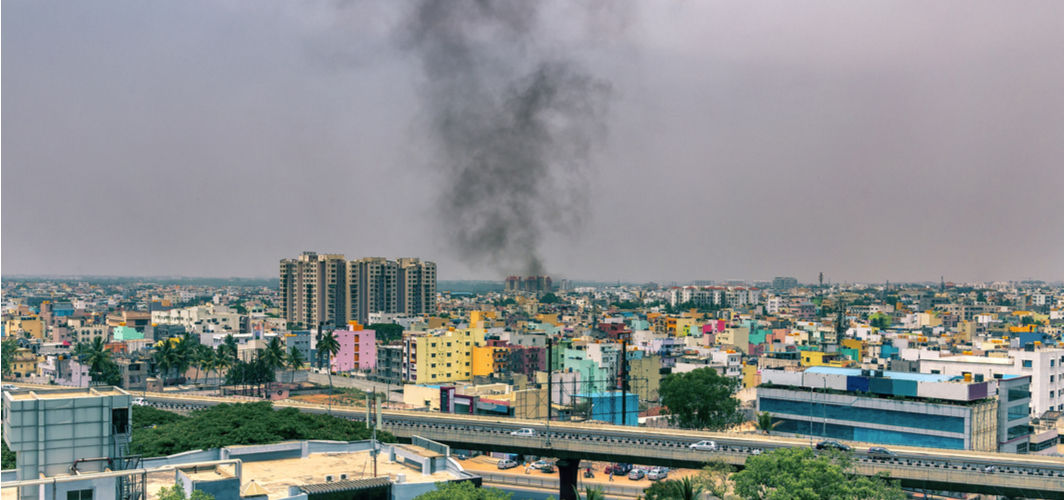General Health
Assessing the Impact of Climate Change and Toxic Pollution on Public Health
4 min read
By Apollo 24/7, Published on - 29 July 2021, Updated on - 09 February 2023
Share this article
0
39 likes

Currently, the entire world is reeling under the combined deleterious effects of climate change and toxic pollution. As we all know, climate change is primarily the result of global warming by non-toxic greenhouse gases; on the other hand, toxic pollution refers to the accumulation of toxic gases and particulate matter in the atmosphere. For years, scientists have been hinting towards possible collusion between these two and their collective impact on mankind. Until recently, there was limited scientific evidence to highlight the possible ramifications of this relationship on public health.
Nevertheless, the promising findings of a new study may enhance our understanding of the challenges posed by toxic emissions, greenhouse gases, and people’s vulnerability to them. The study has found a strong correlation between the geographic distribution of global climate risk and toxic pollution. It has specifically referred to India and China as two countries that are not only most prone to the effects of climate change and toxic pollution but also have the capacity to deal with the risks. The article explores the study in detail.
About the study
The study titled Global distribution and coincidence of pollution, climate impacts, and health risk in the Anthropocene was published in the peer-reviewed journal PLOS ONE on July 21, 2021. The research was led by researchers from the University of Notre Dame. As part of their study, researchers combined the assessments of the risks of air pollution, greenhouse gases that contribute to climate change, and the vulnerability of the human population to them.
The data for the study was sourced from the following three indexes:
- Notre Dame Global Adaptation Initiative (ND-GAIN) - An index of 182 countries that uses 45 performance indicators to summarize a country’s vulnerability and exposure to risks posed by climate change and its readiness to improve climate resilience.
- Environmental Protection Index (EPI) - An index of 180 countries on 32 performance indicators across 11 issue categories covering environmental health and ecosystem vitality.
- Global Alliance on Health and Pollution (GAHP) - A collaborative body of more than 60 members and dozens of observers whose major objective is to estimate the number of toxic pollution deaths for a country, including deaths caused by exposure to toxic pollution globally.
To help the policymakers around the world make use of the study findings, the researchers created a measure called the “Target”. The measure ranks the 177 countries included in the study on the basis of climate impact risk, toxic pollution risk, and its potential readiness to mitigate these risks.
The idea behind the “Target” is to underscore the most vulnerable regions where timely action must be taken to reduce the risk to public health. However, the measure doesn’t focus on how targeting should be done - via incentives or sanctions - and who should take these actions.
Findings of the study
- According to the study, “Deaths resulting from toxic pollution are highest where the distribution of toxic pollution is greatest and, critically, also where the impacts of climate change pose the greatest risk.” This implies that countries that are at the highest risk of the damaging impact of climate change are also the most vulnerable when it comes to the risks represented by toxic pollution.
- The study found that the top one-third of countries at risk of toxic pollution and climate impacts contain more than two-thirds of the global population. The revelation underscores the scale of the problem and unequal distribution of environmental risk.
- Researchers recommend concentrating on the following 10 countries - Singapore, Rwanda, China, India, Solomon Islands, Bhutan, Botswana, Georgia, the Republic of Korea, and Thailand - to accrue a high rate of return on effort in the reduction of toxic pollution and climate change.
- The study noted that India and China account for 23.5% and 17.9% of annual deaths associated with toxic pollution, respectively. It is estimated that 2.3 million Indians die prematurely every year because of toxic pollution. For China, the figure stands at 1.9 million. Researchers observe that by controlling toxic pollution in these two countries, neighboring countries will also benefit along with them.
- The study states that there are certain countries such as Equatorial Guinea, Iraq, Jordan, the Central African Republic, and Venezuela that will likely find it difficult to effectively address the problem of pollution due to outstanding governance issues.
Conclusion
Climate change and toxic pollution are the two pressing challenges confronting humanity. In order to deal with these problems, it is necessary to adopt a scientific approach that focuses on targeting pollution reduction in countries that are not only most vulnerable to the combined effects of toxic pollution and climate change but also have high readiness to generate a high rate of return on effort. On the other hand, countries that are facing the same set of problems alongside governance challenges, such as low state capacity or high corruption, efforts, and resources should be assisted in sorting out the governance challenges before pollution could be effectively addressed.
General Health
Leave Comment
Recommended for you

General Health
Night Owls Or Early Birds: Who’s More Likely To Develop Heart Ailments & Diabetes?
Researchers conducted a study that compared night owls, those who stay up late, with the early birds, those who are at their most energetic in the mornings. Read to know how these sleeping habits can affect people’s susceptibility to developing certain chronic diseases.

General Health
How To Treat Chickenpox At Home?
Learn effective home remedies and treatments to manage chickenpox symptoms and speed up recovery. Discover the latest guidelines, lifestyle factors and new technologies to alleviate discomfort and promote healing.

General Health
World Contraception Day: Everything you need to know about contraception
World Contraception Day (WCD) was first observed on 26th September 2007 to improve the understanding of birth control and family planning.
Subscribe
Sign up for our free Health Library Daily Newsletter
Get doctor-approved health tips, news, and more.
Visual Stories

The Best Exercises for Controlling Blood Sugar Levels
Tap to continue exploring
Recommended for you

General Health
Night Owls Or Early Birds: Who’s More Likely To Develop Heart Ailments & Diabetes?
Researchers conducted a study that compared night owls, those who stay up late, with the early birds, those who are at their most energetic in the mornings. Read to know how these sleeping habits can affect people’s susceptibility to developing certain chronic diseases.

General Health
How To Treat Chickenpox At Home?
Learn effective home remedies and treatments to manage chickenpox symptoms and speed up recovery. Discover the latest guidelines, lifestyle factors and new technologies to alleviate discomfort and promote healing.

General Health
World Contraception Day: Everything you need to know about contraception
World Contraception Day (WCD) was first observed on 26th September 2007 to improve the understanding of birth control and family planning.